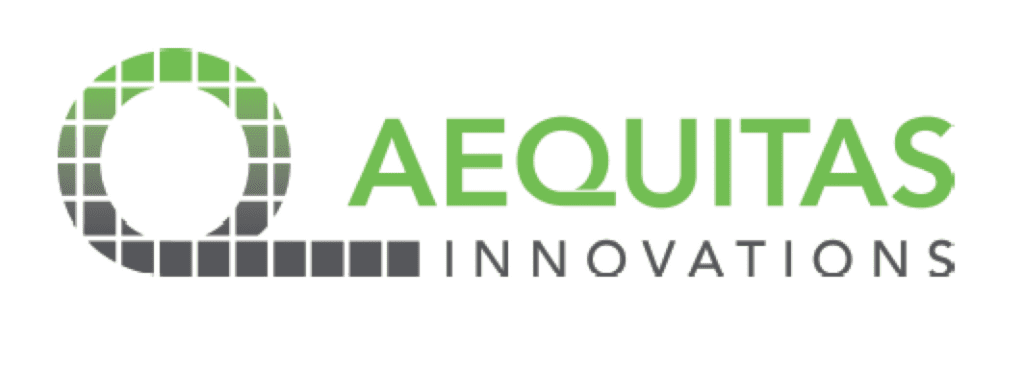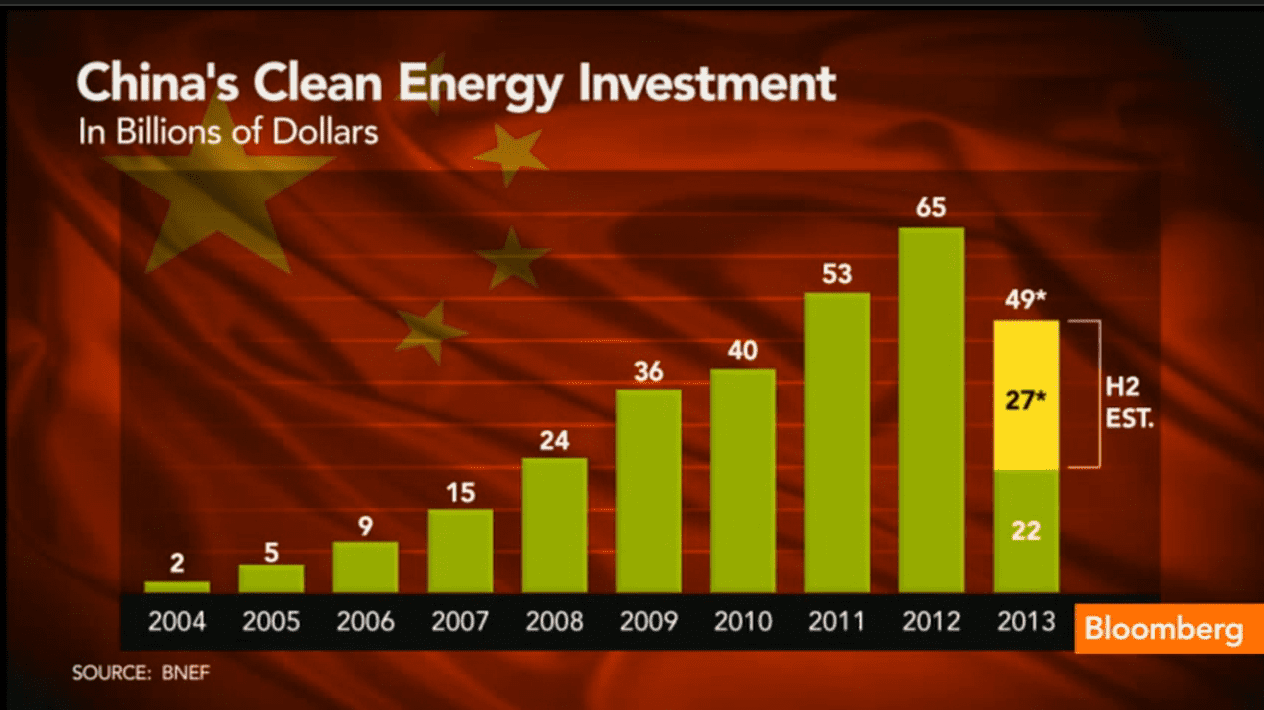Is Aequitas Innovations Good for the Canadian Market?
A couple of weeks back, I talked about Canada’s newest proposed stock exchange, Aequitas Innovations.
Aequitas mission statement is simple:
“To create an exchange in Canada that provides an innovative and cost-efficient marketplace, which protects the interests of all investors and reflects the fundamental purpose of markets: the efficient allocation of capital between issuer and investor as a central force driving the Canadian economy.”
As I mentioned in a past newsletter, Aequitas Innovations is looking to make trading a fair playing field once again by imposing restrictions on High Frequency Trading (HFT) and introducing many new innovations that are supposed to provide a more efficient market – including bringing back a more lenient dark pool trading platform and a marketplace for exempt securities.
Of course, I was skeptical. I’ve heard of enhanced trading before. But before I made my judgement, I wanted to speak with the head of the new exchange, Jos Schmitt, to give them a fair shot.
Jos and I had a very candid conversation about my skepticism and how Aequitas would actually be different. I asked him many questions regarding regulatory concerns, transparency issues, high frequency trading, the junior market, and lots more.
I strongly suggest you read the full interview below.
Ivan Lo Speaks with Jos Schmitt, CEO, Aequitas Innovations
July 12, 2013
Ivan: The TMX is the dominant Canadian Exchange. We’ve seen others, such as the CNSX, try to make a run, but never caught on. How will Aequitas be different?
 Jos Schmitt: Aequitas will be different across its entire service offering, the way trading will take place, the way listings will be approached, the way market data will be provided and the way technology will be used. The reason why we will be so different it that we are putting the investor and the issuer in the driving seat again, not the high frequency traders. Competing for high frequency trading flow, based on fees and latency, would be just more of the same and would not help to tackle the issues our capital markets and its core stakeholders are facing. We are coming with a truly differentiated offering, driven by different interests, and want to give the market true choice. Our ownership model, where dealers are not holding the lion share of the ownership, translates who and what we stand for: the interests of all market stakeholders.
Jos Schmitt: Aequitas will be different across its entire service offering, the way trading will take place, the way listings will be approached, the way market data will be provided and the way technology will be used. The reason why we will be so different it that we are putting the investor and the issuer in the driving seat again, not the high frequency traders. Competing for high frequency trading flow, based on fees and latency, would be just more of the same and would not help to tackle the issues our capital markets and its core stakeholders are facing. We are coming with a truly differentiated offering, driven by different interests, and want to give the market true choice. Our ownership model, where dealers are not holding the lion share of the ownership, translates who and what we stand for: the interests of all market stakeholders.
Why did the initiative start?
Jos Schmitt: Last year the exchange business in Canadian markets transitioned back into a highly concentrated service model. Competition became marginal without any true differentiation from the dominant service provider. Furthermore, everyone is competing for the same flows, the high frequency flows, without trying to understand and tackle some of the key issues our markets are facing: investor confidence issues, quality of execution issues as a consequence of predatory high frequency trading strategies, the erosion of true market makers crowded out by opportunistic high frequency traders, the discomfort about going public, the challenges for small and mid-size companies to find capital, the cost burden on the dealers’ community. This triggered the initiative. We started by analyzing the issues in detail, then identifying the possible solutions and, finally, developing the approach to implement these solutions. This led us to the conclusion that a different exchange and an exempt securities capital raising and trading platform could be the answers. After announcing our ideas, we are now in a stage of dialogue to get feedback and input.
What are the core components of Aequitas?
Jos Schmitt: Our exchange will have three key businesses – trading, data and listing.
The trading business, which will allow for trading in our own listed securities and the securities listed on other Canadian exchanges, is going to be very different because we’re going to be the first marketplace to prevent predatory high frequency trading strategies. We are convinced that these strategies are detrimental to the long-term holders of securities, whether retail investors, mutual funds, pension funds or other. The symptom of these detrimental strategies is intra-day volatility, which is at a historic high, and you can imagine who is always on the short end when prices move up or down. Our toolset to prevent these strategies and re-establish a balanced playing field is a combination of technology and new trading rules. The technology will provide the long-term investor community with the means to fight the technology of high frequency traders, and the new trading rules will prevent certain strategies that seek to identify trading patterns and take advantage of technology to trade ahead of long-term investors. This will be further completed by a trading fee structure that will seek to reduce the presence of rebate driven trading strategies, currently promoted by the vast majority of marketplaces and that led to unnecessary intermediation.
We are also going to leverage new trading rules revisiting the prioritization of order matching, to re-establish the role of true market makers, not the fair-weather market makers who are there when markets are easy, but those who have quoting obligations and are a bastion of liquidity when there is stress in the markets or when securities are not yet at a stage where natural liquidity is present. These market makers are also very critical for corporations who seek a public listing and need to develop liquidity. Let it be clear that high frequency trading firms who want to make their technology and capabilities available to support true liquidity by abiding to our rules, will be very welcome.
On the market data front, we are seeking to implement new data solutions that will provide stakeholders with high quality market data at a low cost. We are working on some new technologies for which we have filed provisional patents and which we want to keep confidential at this stage for competitive reasons.
On the listing front, we will only list senior securities, securities that are ready for a public listing and ready for all responsibilities that come with it. The best market makers will not be able to create liquidity for corporations that are not ready for a public listing. We want our listing rules to be clear and transparent as well as aligned with the needs of the different types of issuers. Our fees will of course be competitive and, again, aligned with the nature of the listings. For companies that are not yet ready for a public listing or not interested in a public listing, we want to provide a separate platform where we can pool interest from accredited and qualified investors to invest in their corporations. This exempt securities platform will also support secondary trading to provide these investors with an exit opportunity without having to push the corporations towards M&A strategies.
All these initiatives will gives investors, issuers and dealers a real choice.
How will your market data offering be different?
As I mentioned earlier, it is a bit too early in the process to provide detail on our market data solution. What I can tell you is that we believe our solution could change the way market data is being made available in markets. I can see these solutions being rolled out outside of Canada. Bear in mind that most of the issues we seek to address are not Canadian in nature, but global, and I do believe that the uniqueness of some of our solutions has potential beyond our borders.
We’re all very worried about the junior market in Canada. Can you say more about your offering for small and mid-sized companies?
We believe a company should only go for a public listing when it’s ready for it. Being publicly listed comes with a financial burden, a regulatory burden, an operational burden and all of this takes a lot of management attention. Getting involved in this when cash is critical and management’s attention should be focused on growing the business is not necessarily the right thing to do.
I understand that many companies want to be publicly listed because they see that as the only way to get the capital they need to access a large nation-wide pool of retail investors and to provide investors with liquidity. They need however to think about the fact that being publicly listed does not guarantee liquidity, and that if there is no liquidity any future capital requirements will be negatively impacted. Furthermore, it creates confidence issues with many unsophisticated investors, which is detrimental on the long run.
To help these companies achieve their capital raising requirements without the burden and without alienating less risk tolerant investors, our intent is provide them with a platform tailored to their specific needs and tailored to the needs of the type of investors they should be attracting. It is like creating an angel investors network on steroids. It will be a hub where we intend to provide a centralized mechanism through which corporations can present themselves to qualified investors across the nation, and it will be a platform where qualified investors can trade the securities of these corporations in a way that will promote price discovery and liquidity. Continuous trading when there is limited liquidity is, for instance, not something that we would support on this platform.
We want dealers to facilitate issuer and investor access to this platform. This was a very conscious decision, away from the disintermediation trend seen in some other countries, because we believe they have a critical role to play in in knowing the investors and assessing the corporations.
To re-cap, what is your main benefit to issuers?
We are giving corporations solutions tailored to their capital raising needs and tailored to the needs of their investors. For publicly listed companies, we will focus on clarity, quality of execution and true liquidity supported by an efficient market-making program. For companies that are not ready to be publicly listed, we will give them a national stage to present themselves to risk tolerant investors and we will complement that with liquidity solutions aligned with the needs of their investors.
Are your solutions fully developed?
We have had a lot of good reactions so far, but we still have a lot of work to do. Before engaging in implementation, we want however to engage in dialogue. We have come up with a lot of new and innovative solutions, but do not pretend that we have figured it all out. I am sure that we missed some issues or developed some solutions that are not totally appropriate. Our aim is to find the right balance between all stakeholders’ interests in a way that ultimately will promote what exchanges should be all about: an efficient mechanism to allocate capital between investors and issuers. We want feedback; we want to make sure that we are establishing the optimal equilibrium that will allow us to achieve our ultimate goal.
There are so many different alternative trading platforms in Canada. And with so many, one of the biggest issues that we’ve seen, and that we hear from our community, is that they have actually removed a lot of transparency and liquidity from our market. So one, how will Aequitas confront that issue and two, will another stock exchange just remove more liquidity from the markets?
I don’t believe that fragmentation is removing transparency and liquidity, but it does create complexity and cost.
If smaller investors, like their professional counterparts, would have a consolidated view of market data across all marketplaces I am sure that they would not have a transparency issue. They would then be able to see all quotes and all volume traded. The problem is however the cost to do so, and no marketplace is coming with an initiative to provide this service at a reduced cost because it impacts their profitability. We will.
With respect to liquidity, I am convinced that the fact of having multiple marketplaces can add, and has added, to overall liquidity. Competition focusing on different interest groups attracts additional liquidity, puts competitive pressure on fees and promotes innovation. The problem however is that in our industry competition is no longer adding value because everyone one is catering to the same group of stakeholders, the high frequency traders. Innovation is limited to how many micro-seconds can I be faster than someone else and what other fee structure can I put in place without it though impacting my own profitability. When you have more than 10 trading platforms in Canada doing the same, the benefits are outpaced by the cost and the burden. That is where we want to be different. We will cater to long-term investors and issuers first. This means competitive fees and top technology, and, in particular, it means looking at different market models, focusing on different approaches to listing where the objective should not be how many listings do I have but how successful are my issuers. Competition has to provide real choice, not more of the same. That is how it creates true value for all industry stakeholders.
I’m sure the TMX did not want the regulators to allow all of these multiple trading platforms. In a sense, you could say that they were forced to do that. So is it safe to say at this moment that your platform will – even if you were forced to have more multiple trading platforms – have data readily available? And if that was the case, how do you guys prevent the whole transparency and data issue that you guys might have? I know you don’t want to talk a lot about it at this moment due to competitive advantage, but it sounds to me like you have a solution to that.
I cannot speak for the TMX, but if I were one of their shareholders I would welcome true competition, as it is what keeps an organization on its toes. When you look at history, you will notice that companies that prosper for a long period of time without competition suddenly get overtaken by evolution. With respect to market data, we believe that we do have a solution that can, once and for all, overcome the data issue. And we are going to make that solution available at extremely competitive costs.
So if we can go back a little bit, one of the steps – the first step – of how you will be different is restricting high frequency trading or the predatory nature that exists in the market. How specifically will you attempt to help this issue?
Multiple strategies of this nature have been developed and will continue to be developed in the future. That is, by the way, one of the reasons that I believe that commercial forces should tackle it rather than regulation.
Regulation will not be able to keep up.
Let me give you a couple of examples of predatory strategies and how we would tackle them:
Latency arbitrage – you think there is a lot of liquidity in the market, you send in an order, you touch the liquidity on one marketplace and it disappears on all other ones where you did see it. Not only does it disappear, but also you suddenly have a series of new orders in the market with the same intent as you. To fill your order to its full extent, you now need to trade at a worse price or sit in the book with other parties that are ahead of you in the priority queues. We will tackle this with an order routing technology that will ensure that your order hits all marketplaces showing liquidity at the same time. Your fill rate will increase and other market participants will be held accountable to the liquidity they display.
Rebate strategies – parties sit in the book with small resting orders and without the slightest intent to take a position, just to be traded and collect rebates. They spend their day jumping in front of long-term investors who possess a real intent to take a position and prevent them from doing so. This over-intermediation generates volume, but has no value, does not add to true liquidity and creates intra-day volatility. We are going to tackle this by having trading books where no rebates will be paid.
Exploratory trading – parties send in small orders taking liquidity to identify trading patterns amongst those sitting in a book, trying to figure out if there is a long term investor with a real intent to build a position sitting there. Once identified, they jump ahead of them as they have identified a directional trend. We will tackle that by not allowing parties who do not seek to take long-term position to take liquidity in some of our books. Long-term investors will be protected in those books.
So is that your hybrid book concept?
The absence of rebates, the inability to take liquidity for traders not seeking to take long-term positions, and new matching models will indeed be implemented in our hybrid book but also in our dark book. The dark book will be there to allow larger investors to benefit from our protection mechanisms, the hybrid book will be there for smaller investors and will come will full transparency i.e. you will be able to see liquidity. We are convinced that by preventing numerous predatory strategies, we will also promote better and more reliable liquidity in our dark and hybrid books and that all long-tern investors, small and large, will benefit from this.
In addition, it is our intent to give retail flow a preferential fee structure in these books.
So you will be encouraging retail flow?
Absolutely, it is a critical flow to the markets.
How exact will you identify orders that do not seek to take long-term positions?
We will leverage an order marker designed by IIROC: the short market exempt marker. This is a marker that participants need to put on their orders when their intent is to have a flat position at the end of the trading day. It applies typically to HFTs, but also to arbitrage and market making.
What are the opportunistic HFT strategies that you talk about?
What we have seen with a lot of HFTs is that they focus their activity on securities that are already liquid by nature, and that they are very active in those securities when trading is easy. They take advantage of their technology to trade ahead of everyone else, including the true market makers. However as soon as there is stress in the market they disappear and leave all the difficult trades to the true market makers. Similarly, you don’t see them in less liquid securities where trading is more difficult by definition.
This opportunistic behaviour has negatively impacted the true market making business. Market makers can only trade when there are bad trades to be made, and they are crowded out in periods of good trading. Their business model is no longer sustainable and you see them leaving the markets. This in turn has a detrimental impact on investors and issuers as liquidity is adversely impacted particularly when you need it most.
We are going to tackle this, by providing market makers with new incentives and giving them priority in some of our trading books. If they are able again to make money, they will be able to be there when they are needed most i.e. in periods of stress, for less liquid securities and for issuers that just went public.
What will be the importance of the lit market?
The lit book is where our market makers will fulfill their quoting commitments and support price discovery. Our lit market is also a protected book and that is where we recommend retail investors to post their resting orders. In addition, we will give long-term investors execution priority in that book so that they are not subject to predatory resting order strategies.
Obviously with the markets the way they are, a lot of companies are being hit with a lot of shorts, especially on the TSX Venture. I know you guys are looking to cater to a more senior exchange. But for a lot of the guys out here – a lot of the guys in industry – short selling has been a major issue with the removal of the uptick rule. It also seems there’s a lot of naked shorts and no one knows where it’s coming from, and no one seems to ever have to cover these shorts. Is what you’re telling me right now a way to handle that particular instance?
A large part of inappropriate short selling is the result of predatory HFT strategies and we will tackle that. Our exempt market for small- and mid-size companies will not cater to short selling.
So we’ve talked about how you’re going to focus on the senior exchange, but as you know, right now, the biggest hurdle is the TSX venture. Not just because of the sector but because of all the new rules and regulations that have been put in place. With the senior market your primary, how will this new exchange help the guys on the TSX venture? And is there a certain limit, a specific limit that you guys are putting into place that will separate a senior market from a junior market?
We will indeed have a clear set of criteria for the senior market, and it will establish our view of what we think is a security ready for a public listing. We will look at classical listing criteria but will also look at more innovative concepts, as today’s listing criteria are only based on a going-concern view of things.
For small and mid-size companies, the question they have to ask themselves is whether they are ready for a public listing or whether they should look at alternatives that are more suited to their stage of development. We will not provide a public listing venue for venture companies, but that is where our exempt market platform comes in. It will be less burdensome and ensure that the issuers have the investors and liquidity that they really need. Once they have experienced sufficient growth, attracted sufficient investor interest and developed sustainable liquidity, they can be promoted to our public listing venue for senior companies.
Will you have a migration process?
Yes, but it will be an option and not mandatory.
I’m curious because in your position paper, you mentioned– the same things that I’ve mentioned before in my Letters – that it’s becoming increasingly difficult for corporations, especially for smaller issuers, to interact with risk tolerant investors and access the financing they require. I know the local angel investment community has never had an issue with this. Your position paper mentions that Aequitas is going to be amplifying the local angel investment community model. How exactly are you going to do that? Is it with this particular exempt market that you’re going to try to attempt to amplify this model?
Absolutely, that is really what it is. We will of course not limit it to the classical angel investors and allow all types of qualified investors to participate. The angel networks are a great example to emulate, but we want to give the model scale by promoting a centralized and nation-wide solution. We will complement it with a trading facility that will provide the secondary liquidity and price discovery mechanisms that are so critical to many investors in exempt securities. The lack thereof is preventing many of them, today, to participate and allocate investment dollars to small and mid-size companies.
I am speaking with a lot CEOs that now wished they were private. In essence, by creating that market, you’re not just removing stocks that shouldn’t be listed in the first place, but you’re creating a market for those that would prefer to be private. And you’re not only giving a model to do that, but you’re also helping them because if you’re not a publically traded company, you don’t have some of those issues where people are short selling your stock and forcing you down and adding further dilution. You also wouldn’t have the daily swings in share price due to lack of liquidity. Would that be safe to say?
Well I think you summarized it in a great way. As I said earlier, we have spent a lot of time trying to understand the issues in our industry and to come with the right innovative solutions. And again, no one should hesitate to reach out to us and to make additional suggestions. We want to improve the markets and we want a more balanced and fairer treatment of all stakeholders.
Now with regards to that, the fairness issue, I have to ask: “Is it fair?” For example, is it fair to remove speculation from an investor who’s not an accredited investor? This is not obviously for you to change – because it’s a regulatory concern, but I believe that’s taken a lot of the liquidity away. I think every individual, whether you make 60 grand a year, or you make $2 million a year, should be able to speculate, because that’s the basis of capital growth and capitalism. Now is there a point where your exchange will attempt to tackle some of those issues, especially for the smaller corporations? Is that something you’re looking at even if you’re not focused on it right now. Do you have the forward thinking mentality to address those issues as well?
That is a very interesting question, because you touch a very critical item: investor protection vs. access to the traditional retail investor as capital provider. This is indeed a matter for the regulators and not for us to tackle. What I can say, however, is that the world should not be black and white, and that while the regulators are working on this, we should help them by coming up with new ideas and concepts that would allow us to achieve all objectives.
Crowd-funding is one of those concepts, venture funds is another one. We are supportive of this type of innovation but it is critical again to find the right balance.
Now, does that also mean that you guys are working closely with the regulators and opening discussions with them in regards to some of these topics?
We are not actively negotiating or discussing those topics with them but have shared some of our opinions.
Will you make it easier on your exchange for foreign investors to buy stock on your exchange? I mean, do you have a partner in the U.S. capable of allowing the integration?
We haven’t specifically looked at that issue or opportunity. I would say that it’s something we have been thinking about but it’s not part of our immediate priorities. We have already a quite ambitious plan and that is what we want to deliver upon first. Afterwards, we will continue to listen and focus on new innovative solution to promote our capital markets. One thing that I can say though is that in our future endeavours, we will prioritize attracting foreign capital into Canadian issuers over attracting foreign issuers, unless the latter can also bring new investor interest with them into our market.
The last question for me is one that deals with what we hear on the streets. There’s a lot of speculation about how the big banks are taking over and draining the speculative markets. A lot of that is on the regulatory side, but as you know, IIROC, for example, is run by executives at major banking institutions. What is your response to the fact that many are saying that big banks – including RBC – want to wealth-manage investor money rather than let them trade it themselves, which also removes liquidity from the speculative markets.
Well, it’s hard for me to comment on who is trying to do what. The one thing that I do know is that there’s a lot of speculation around a lot of things, and that there are also a lot of conspiracy theories. Since the announcement of our initiative we have had a lot of positive reactions, but you will also find the conspiracy theorists that are trying to identify hidden agendas. Let it be clear that our initiatives, particularly through the exempt market platform, will provide an innovative investment and trading vehicle for accredited investors and that goes against some of the theories you refer to.
We are driven by the fundamental interest to grow the markets, but grow them in a balanced way with the interest of all stakeholders in mind, and the interests of the investors and the issuers at the forefront of our mind.
To sum it up, you’re not looking to just take a big piece of the pie, but you’re actually trying to make the pie bigger for everybody?
That is our ultimate objective. You hear many say that markets are broken, I don’t think so but I do think they need to be improved. And the way to get there is to provide not just choice but truly differentiated choice. Choice based on innovation, and choice based on listening to the industry stakeholders.
I do truly hope, that we will get a lot of reactions from your reader community and beyond, reactions to help us in moving forward with a full understanding of their concerns and issues, reactions to support us in implementing our vision.














How do you keep the regulators from being puppets of the large banks? The banks have very deep pockets.
Buy an easily and quickly scalable back room, and then go for the US and International market. When can I buy shares in Aequitas for my RBC RRSP?
Conspiracy Theories – that puts it mildly. How can we, as investors and citizens for that matter, trust anyone. I’m very .disillusioned .
Ivan, you need to expand in layman terms what the future of venture investing will look like. It seems to me that they want to address the issues and they recognize that it is the root of price discover but they are falling short.
True, many listed companies there should not be listed under today’s conditions. I know several companies who wish they were private now. They place the blame rightly where it belongs. They spent millions supporting this structure only to be defrauded out of what they should have had the right to expect. So, it seems unfair to blame them for not being able to meet very long term capital commitments in a corrupt environment.
Albert E. published proof that there is no such thing as simultaneity so there will never be an absolute equality between the parallel books out there. Never! I don’t care if you connect them by fiber optic without a router, light takes time to travel. I could thwart that using predictive software and actually place a short before the transition occurred.
So I sell on one exchange and short on the others then wait for the reaction. Lose on one and gain on the others. I can do that all day and make money. Oh, short term market inefficiencies indeed. What a crock.
What about painting the chart red? So I want a company’s deposits because I know they have good pay dirt. I take pps and buy open shares until I have a huge position. Then I sell 50 shares at a crack a penny down until I destroy the share value. I starve the company out of money them make a hostile low ball bid. Much cheaper than just a hostile offer and buying up all the shares!
We really need an in depth explanation from them and you as to what the landscape might look like. Mining and technology are the roots of the future in Canada. Mining and energy even more so than technology. Without these venture companies we are in for some aweful shocks to the system.
I am predicting an exodus of retail when this exchange gets going. I say this because all investors of size know the true price discovery rests on the millions of minds of the retail and not the hundreds within the corporate walls of the institutions. This is going to impact venture investing in a massive way even if these guys do nothing more than keep the status quo. Venture investing will lose out to a stable market place.
Why would I buy in a corrupt market when I can buy dividends and get price growth on top of that? I plan to complete my move out of the venture next month, well ahead of the exodus that I know is coming. I’m not waiting until 2014.
On my blog I discussed in brief how the tsx will lie and try to get back some of the retail by claiming they are listening to the market. The reality is that the damage is already done to the venture. The only volume and green we are seeing is a result of Reuters being publicly outed for predatory data sales to hfts. The brief pause in the collapse of the venture does not mean it has stopped it’s slide into oblivion. The venture is now nothing more than a gigantic Bre-x.
Your opinions and expanded information would be very much appreciated.
WELL said. Perhaps Aequitas will change the market? Or perhaps it will be just another big bank taking more fees and wealth through manipulative efforts.
Time will tell
I think Jos handled Ivan’s questions very well, but a lot remains to be explored. There is most certainly still doubt in my mind and I hope Ivan continues to pursue the discussions with Jos.
I am still a little bit worried about what it will bring to the market, but the current state isn’t doing well so something new might just be the spark we need.
Please keep us informed.
I hate losing my hard earned cash, but if i had a
choice, i would prefer it go to anyone, who
couldn’t afford a money machine (HFT)
Judging by this summary, Aequitas will still slow HFT, but restrict their use